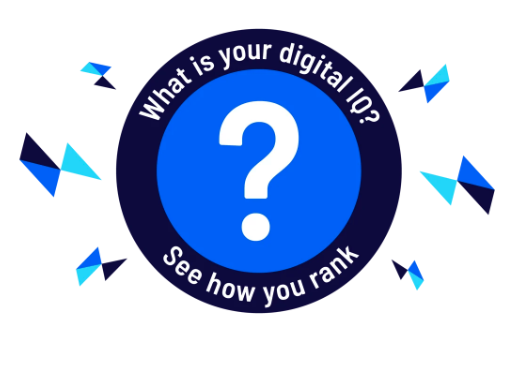Product Management 101: Understanding the Key Concepts and Techniques

No matter what industry you're in, as long as you're making products for customers, product managers are an invaluable addition to your team.
Here is what you'll find in this article:
1. What is Product Management?
2. What isn't Product Management?
3. What is the Product Management Process?
i. Find a problem worth solving
ii. Qualify your proposed solution
v. Build an MVP and feedback loops
4. What are Product Management Techniques?
Alright. Let's dive in!
What is Product Management?
Product management is the process of taking a product from the initial stages of conception to assessing its market viability and whether it can meet business objectives.
Led by product managers, product management oversees the development of a product and ensures that it is released on time and within budget.
Product management is a cross-functional role that involves communicating with stakeholders, marketers, sales teams, customer service teams and C-level executives.
This cross-functional nature can lead to some confusion about what exactly product management is and what it isn’t.
-Apr-03-2023-02-45-30-0710-PM.jpg?width=750&height=480&name=Resized%20Blog%20Headers%20(1)-Apr-03-2023-02-45-30-0710-PM.jpg)
What product management is not?
Product management involves many unique responsibilities that are often confused with other related roles. Some of the key distinctions are:
- It is NOT project management, which focuses on coordinating teams, assigning tasks, measuring KPIs, and managing risks and failures.
- It is NOT product ownership, which involves managing the development cycle, optimising the development team, and following the direction of a product manager.
- It is NOT product marketing, which involves planning and implementing a product's marketing strategy and promoting it to consumers.
Instead, product managers oversee the entire product lifecycle , from development to release to customer feedback.
They gather data and conduct research to understand how their product compares to competitors and satisfies customers, including determining pricing and market positioning.
If the things aren't clear at this point. No worries, it's a complicated thing. We know that.
Here is a video that might help you a lot:
What is the Product Management Process?
There is no one-size-fits-all approach to product management.
Each organisation and its teams will follow iterations of it but there are general guidelines you can follow.
Here is a typical product management process:
Find a problem worth solving
Your first step in the product management process is to identify a problem in the market that requires a solution.
Product managers will conduct market research to assess customer needs.
They’ll explore current trends and use their extensive knowledge in their respective industries.
The goal is predict future challenges and accompanying solutions.
Through research, you’ll uncover data that highlights user problems. Common methods to gather feedback are:
- Surveys
- Customer feedback portals
- Social media feedback
- Online reviews
- Forums
- Focus groups
- Customer support tickets
- Usability testing
- Interviews
What you’re looking for here is what’s known as a value proposition.
This question can be used to define a value proposition:
What value does your product provide to a customer?
Think about some of the possible answers - Will it save them money or time? Will it make them money or increase their productivity? Will it help them relax or motivate them?
-Apr-03-2023-02-50-02-5108-PM.jpg?width=750&height=480&name=Resized%20Blog%20Headers%20(2)-Apr-03-2023-02-50-02-5108-PM.jpg)
Qualify your proposed solution
Now that you understand the needs of your customers and their pain points, you can start building a bank of ideas to meet this demand.
It’s easy to let creativity take over here but before you decide on what a product should be, there are practical elements to consider:
- How big is the audience for your product? This is known as the TAM (Total Addressable Market).
- Are people willing to pay for this solution?
- Are there any alternative solutions?
- Are there other ways to monetise your product?
It can’t be overstated how important these questions and answers are.
Bringing a new product to market is costly in terms of time and expense so be certain of its viability.

Develop and test ideas
Want some free advice?
Test your ideas with customers and gather feedback. All the research in the world might point to a sure-fire hit but there are no guarantees.
If people aren’t excited or at least intrigued by it then it can all be for nothing.
So before you get carried away building prototypes and wireframes, start by developing personas to narrow the target audience.
Then collect feedback from customers to see if you’ve got product-market fit.

Create a product roadmap
A product roadmap is a high-level view of everything involved in bringing your product to market.
- Business goals and initiatives
- What resources are needed to achieve them
- Estimated completion date
- Backlogs for bug fixes and other information pertinent to specific departments.
Roadmaps are used to communicate your product’s plan to the wider teams and departments but also to gain buy-in from stakeholders and even customers.
It’s the what and why of your product planning.
Roadmaps are designed to change over time too.
As your products release and gather feedback, objectives will change and new directives will be added.
Roadmaps evolve with predicted outcomes and unexpected variables.
Build an MVP and feedback loops
A Minimum Viable Product, or MVP as it’s known, is a basic but functional version of your product that supports the must-have features.
Limiting the product in this way avoids unnecessary spending or exhausting resources early on.
This early design can then be presented to customers for feedback, which is fed back to the teams for development tweaks.
An MVP allows product managers to see how their product fares in the real world.
Product managers can measure product viability and product market fit with far more certainty using MVPs.
This is because real customers are interacting and giving feedback on it.
This also benefits the product marketers, letting them know how a product is received and whether its positioning is correct.
All of this information can be translated back into your roadmap and communicated with your teams.

Executing your strategy
Armed with extensive research, a viable product that meets user demands and an iterative feedback loop, you’re ready to lead your development team into executing the product vision.
At each stage, product managers will manage resources diligently.
They ensure they can tend to the needs of their development teams and meet customer expectations.
This makes prioritisation skills a crucial component of product management.
Prioritisation frameworks will help to rank development activities effectively and efficiently.
You'll need to stay on top of product backlogs and scope, working with engineers to minimise delays or risks and ensure the product meets the expected quality demands.
Product management doesn’t end with a finalised product though.
There’s plenty to keep your eye on as you navigate the product launch and post-launch feedback.
New features, tweaks, bug fixes and alterations to the product positioning all incur post-launch which can be transmitted to your product roadmap.

What are Product Management Techniques?
The product management techniques are:
Deep knowledge of your field: the more you know, the better. A solid grasp of your market, the audience and how similar products perform is imperative for building a new product that can compete and penetrate the market.
Your expertise can be leant on by all departments from the engineers to the marketers to the sales reps.
Embrace soft skills: the ability to listen will save time and get you closer to the mark in a fraction of the time.
When conducting user feedback, listening to their pain points and desires tells you which features will need including or tweaking.
Communicating these needs to your teams and stakeholders opens the door for:
- More listening
- Taking time to hear the technical, financial or otherwise valuable feedback from different parties
Empathy underpins all of this by allowing you to see other perspectives.
Both listening and having empathy lead to better questions and richer answers, which leads to superior products.
![]()
Unfortunately, some people believe that soft skills aren’t that important.
However, almost every employer I’ve ever talked to about this disagrees. […]
Agile philosophy: using agile product management methods can help with prioritising backlogs and managing sprints between lifecycle stages.
Agile is a popular framework, particularly in software and tech teams.
But its principles are far-reaching.
Knowing this approach encourages better communication, higher collaboration between teams and departments and smoother product development.
Technical knowledge and visualisation techniques: to avoid delays and unclear product goals, a good understanding of technical knowledge is key.
Product requirements and features should be presented in forms your team can follow easily, whether it’s a technical product blueprint, epic or user stories.
Business strategy and setting KPIs: product managers are the bridge between business owners, stakeholders and teams.
You need to be adept at interpreting business goals into comprehensive KPIs (Key Performance Indicators) that can be shared, agreed upon and monitored.
Leadership: leadership is your ability to influence, communicate and organise both yourself and your teams.
Great product management happens at the top and trickles down.
Hard skills will give you a leg up in technical areas associated with product management such as UX, business, and marketing.
But leadership is a skill that needs nurturing over time.
What’s Next?
Product management has grown to become one of the most valuable roles in an organisation.
It’s a cross-functional role that blends multiple skills, from researching customers, markets and competitors to developing strategic roadmaps that guide your team to success.
You’ll work with many people including engineers, marketers and stakeholders which makes it an attractive career for great communicators, savvy business minds and team players.
We’ve covered product management concepts and techniques but if you’d like to take your intrigue one step further, take a peek at Growth Tribe’s Digital Product Management and Strategy Certificate.
FAQs
What are the 3 major areas of product management?
The three major areas of product management are strategy, execution, and analysis. Product managers must create a product strategy that aligns with business goals, oversee the execution of that strategy with cross-functional teams, and analyse data to make data-driven decisions for continuous improvement.
Is product management an IT role?
Nope! Product management is not exclusively an IT role. While product managers often work with technology products, they can be found in a wide range of industries, including healthcare, finance, and consumer goods. The skills required for product management, such as strategy, communication, and customer empathy, are transferable across industries.
Do product managers need to code?
Having a basic understanding of coding can be helpful, but it's not mandatory. Product managers should be able to communicate effectively with engineering teams and understand the technical aspects of a product, but they do not need to be proficient coders. The most important skills for product managers are strategic thinking, communication, and customer empathy.
Become a Product Manager!
Master the fundamentals of product management as you learn about:
- Module 1 - Know your business, audience, and markets
- Module 2 - Know your customers as people and in numbers
- Module 3 - Value and purpose
- Module 4 - Product discovery and market fit
- Module 5 - Drive business value through measurement
- Module 6 - The zen of roadmap maintenance
See the full course overview here.
Learning with Growth Tribe couldn’t be easier. All of our courses are designed to be flexible for the learner with self-paced content so you can manage your time and learning, to best suit your lifestyle.
Join a community of over 35,000 certified alumni who share a passion for growing their skills and positively impacting their careers.
Categories
- Business & Innovation (72)
- Growth & Marketing (61)
- Data & Analytics (25)
- UX Design (13)
- Alumni Stories (11)
Related articles
Latest articles
Boost your Revenue Growth using LinkedIn Social Selling
In a digital age where connections mean everything, leveraging...
The Power of Collaboration: Enhancing Team Performance Tactics
As organisations navigate complex challenges and strive for...
The Ultimate guide to boost organic growth in 2024
Imagine organic growth as the business equivalent of sculpting...
The best 2024 Business Development Guide
What exactly is business development, and how does it differ from...











